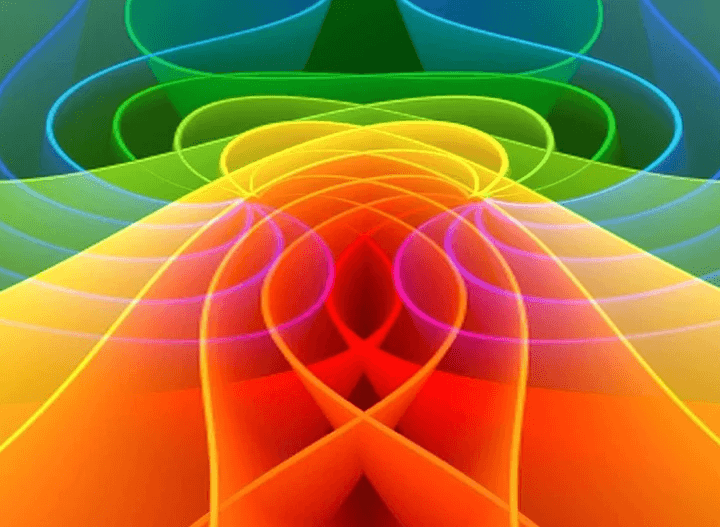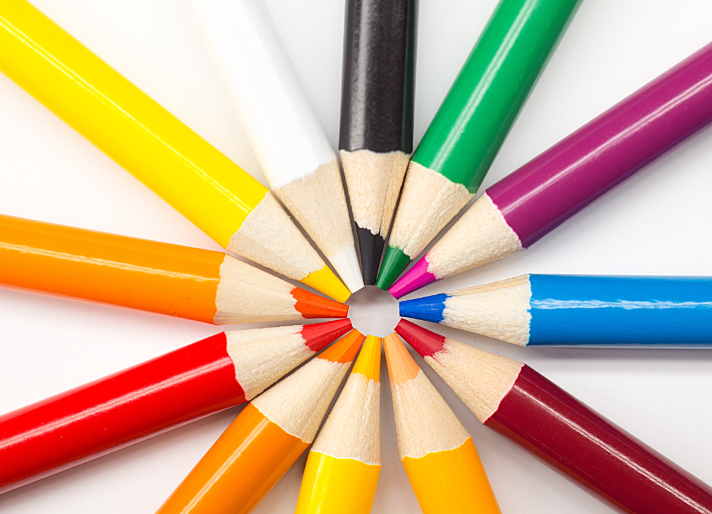At the very heart of potent visual compositions, a critical tenet prevails – the unity principle of design. This unique rule orbits around the conviction that every component within a design should function in synergy to create an integrated entity, articulating a distinct message or concept. Fundamentally, unity symbolizes how much consensus exists among divergent elements of a design; it emphasizes ensuring all aspects of your creation are harmonious and mutually enhancing, crafting an unequivocal and succinct representation or communication.
This notion of the unity principle in design definition pervades across all dimensions of artistic endeavors, whether they manifest in fine art masterpieces, captivating photography shots or sophisticated graphic and web designs. It operates as the fundamental thread interlinking all components within a piece. When adeptly wielded, it bestows upon your work an aura of fullness and equilibrium while infusing it with an overarching sense of orderliness and uniformity. Comprehending this fundamental precept and skillfully applying it is instrumental in delivering lucid, immersive, and impactful visual narratives.
The Importance of Unity in Graphic Design
Probing into the heart of design principles sometimes leaves one baffled, grappling with a question that looms large – “What does the unity principle in design signify?” In its most unadorned form, this mysterious-sounding principle is nothing but an effective amalgamation of diverse elements to create a harmonious whole within a specific design. When wielded appropriately, this unity in design endows viewers with feelings of uniformity and harmony. It creates an aura of equilibrium and professionalism.
Venturing further into the labyrinthine depths, it becomes evident that the significance of unity in graphic design stands magnified beyond any measure. As a cornerstone of good designing practices, unity plays a crucial role in determining how successful or impactful your overall strategy will be. A well-unified aesthetic offers viewers an uninterrupted visual journey by orchestrating smooth transitions between disparate elements it encapsulates. This not only amplifies the aesthetic charm but also bolsters readability – making designs more absorbing for their audience. Employing the unity principle wisely can indeed spell the difference between designs that are mesmerizingly captivating versus those cast aside as mundane.
Exploring the Different Elements that Achieve Unity

In the realm of design, unity manifests as a tantalizing blend of myriad elements, all conspiring harmoniously to weave a tapestry of visual appeal that resonates with consistency. Comprehending the labyrinthine intricacies inherent in this concept is not only crucial for aesthetics but also pivotal in dictating user engagement and experience. So then arises the puzzle: What does one mean by unity in design?
At its core, unity in design serves as an invisible thread weaving together disparate sections into an engrossing visual narrative. It’s akin to assembling a strategic mosaic where colors fraternize with text, images play off white spaces and the result is nothing short of enchanting – an unbroken panorama teeming with life yet oozing coherence. Such orchestration confers upon designs a certain uniformity wherein every component exudes belongingness to the whole rather than existing as lone islands.
The confluence of three cardinal principles – repetition, proximity, alignment- breathes life into this elusive concept called unity. Repetition employs motifs recurring like echoes across time and space creating ripples of cohesiveness within viewer’s mindscape. Proximity ushers related components into close-knit clusters rendering them easily digestible while alignment lines up elements like disciplined soldiers avoiding any whiff of disarray or chaos.
Each principle acts much like pieces from different jigsaw puzzles – unique when viewed alone but once assembled form part of an irresistible tableau that leaves viewers spellbound!
How to Apply Unity in Website Design
Within the sphere of website design, the fundamental cornerstones of unity bear substantial significance in fabricating visually appealing and straightforward-to-navigate interfaces. To grasp how to deploy unity effectively, it is essential to fathom the principles of design definitions which encompass balance, alignment, contrast, repetition, proximity and white space. These foundational elements of design once mastered can seamlessly instill unity into a web layout producing an overall aura of cohesiveness.
Essentially speaking, unity embodies a stringent amalgamation of all design components thereby crafting a coherent visual and functional entirety. When put into play in website designing context it’s about setting up a harmonious tone throughout the site be it through color patterns typography or imagery. Balance and alignment impart aesthetic appeal to a site while making navigation logical and intuitive at the same time. Contrast makes crucial elements conspicuous whereas repetition bolsters visual unity. Proximity along with white space are clever tactics for clustering related content together whilst creating ‘breathing room’ for viewers eyes correspondingly . Hence understanding these design principles practically turns out to be key in establishing uniformity within website designs.
The Role of Unity in Creating a Cohesive Design
Like a perplexing puzzle, unity stands as a cornerstone within the vast labyrinth of design principles. It weaves its magic to concoct an harmonious tapestry from myriad elements. The process unfolds much like composing a symphony, each note resonating with others to birth captivating melody that enraptures the audience. In similar vein, unity in design orchestrates various elements into an engaging and comprehensive narrative that bursts forth with intrigue.
When one delves into realms such as graphic or web design or any form of visual communication for that matter, unity emerges as the enigmatic thread weaving together disparate pieces. It simplifies complex visual narratives by segmenting them into digestible portions without disrupting the rhythmic flow of consistency. With clever use of colors dancing in sync, typography playing creative tunes, appropriate white spaces adding breaths between notes and symmetry bringing balance; unity assists in tactical positioning of design ingredients on this canvas.
The result? A well-coordinated tableau where every single element is meticulously synchronized not only to convey the intended message effectively but also while preserving its inherent aesthetic splendor.
Unity in design does not merely happen by chance. It is a deliberate process that involves several key principles and techniques:
- Consistency: This is vital to maintain unity in design. Consistent use of colors, fonts, styles, and layouts across all elements ensures an integrated look and feel.
- Alignment: Proper alignment of different elements helps create a clean, organized layout which significantly contributes to the overall unity of the design.
- Proximity: Grouping related items together enhances visual organization and reinforces unity within the design.
- Repetition: Repeating certain elements like color schemes or graphic motifs throughout the design strengthens its unified appearance.
- Contrast: While it may seem counterintuitive, contrast can actually enhance unity. By creating clear distinctions between different sections or elements within your design, you make it easier for viewers to understand how they relate to each other as part of a cohesive whole.
In conclusion, achieving unity in any form of visual communication demands meticulous attention to detail coupled with thoughtful application of various principles and techniques. A truly unified design resonates with its audience at multiple levels – intellectually engaging them with its message while simultaneously captivating their senses through aesthetic appeal. Unity thus serves as both an artful strategy for effective communication as well as an elegant expression of creative vision.
To leverage these benefits fully:
- Understand your target audience’s preferences and expectations.
- Experiment with different combinations till you find what works best.
- Always consider context when selecting colors, typography etc.
- Balance creativity with functionality—don’t let one overshadow another.
- Regularly update yourself on current trends but don’t blindly follow them; instead adapt those that align well with your unique style and objectives.
The Impact of Unity on User Experience
Inextricably melded with the task of crafting a visually harmonious perception, unity stands as a significant sculptor in the realm of user experience within graphic and web design. The presentation of elements in uniformity, visuals arranged in harmony, and an unswerving theme entice human cognition – molding interpretation and interaction into smooth, effortless processes. This births intuitive comprehension that aids user navigation; ultimately paving way for a gratifyingly positive user journey.
Additionally, instilling unity into design proves to be an axis around which cognitive consistency rotates – this being a prime contributor towards shaping an uncomplicated yet captivating user voyage. When components such as graphics, hues, typography and other elements echo unity’s call – it narrows down cognitive dissonance along with confusion. Predictability birthed from unified design elements curtails mental processing work for users – leaving them free to focus more on unraveling content’s essence or the website’s purpose rather than deciphering its organization. Thusly emerges the instrumental role played by unity in tailoring enjoyable efficiency within user experiences.
The Relationship Between Unity and Other Design Principles
In the labyrinth of design principles, an entangled web exists where no single principle stands alone. Indeed, Unity assumes a unique role in this interplay as it forms intricate bonds with its fellow core concepts; balance, hierarchy, emphasis, contrast, rhythm and scale. Interdependence is at the heart of their existence – each one sways under the influence of others while simultaneously exerting its own pull. Consider emphasis – a tool used to make certain elements in design pop which subsequently sends ripples through unity. Balance steps in here to restore equilibrium and thus strengthens unity.
Contrast seemingly presents itself as an adversary to unity since they appear diametrically opposed on surface level. Yet for successful design execution both are pivotal roles players. Contrast injects vitality into designs saving them from becoming monotonous or unremarkable but overdoing it can tip the scales towards visual pandemonium shattering unity and disrupting harmonious creation.
This delicate dance between unity and other principles underscores how subtly yet significantly unity controls these parameters – pulling strings quietly behind-the-scenes maintaining order amidst potential chaos. It also re-emphasizes that these complex relationships amongst different design principles aren’t merely incidental but fundamental to understanding masterful designing.
FAQs
The concept of unity in design is the strategic organization of components so that they amalgamate into a single, harmonious entity. It fosters visual fluidity where all elements converge effortlessly.
Unity holds paramount importance in graphic designing as it ensures congruity, coherence and harmony amongst varying elements. This yields an aesthetically balanced and pleasing design, thereby facilitating effective communication to its intended audience.
Factors such as color, form, dimension, intensity, texture and space could facilitate attainment of unity. Uniformity across these factors enables smooth transition for viewers’ eyes throughout the artwork thus instilling equilibrium and coherence.
In web-based designs, infusion of unity via uniform utilization of hues, typography styles, imagery and layout across all pages boosts not just aesthetic charm but also betters overall navigation experience making it more user friendly.
The role played by Unity is pivotal when it comes to crafting cohesive designs. It assists diverse components to unite seamlessly forming a complete whole instead being perceived as separate entities.This promotes balance and accord within the design’s framework.
Sizable impact can be seen on User Interface experiences due to unified designs leading easy navigational routes ,clearly articulated messaging along with providing visually gratifying encounters.All this amplifies user engagement levels hence fostering satisfaction amongst users .
Unity shares intimate connections with various other principles linked with designing like Balance,Hierarchy,Contrast and Emphasis. Effectual application of these principles could accentuate Unity within designs thereby resulting in a design that is not only visually appealing but also highly effective.




